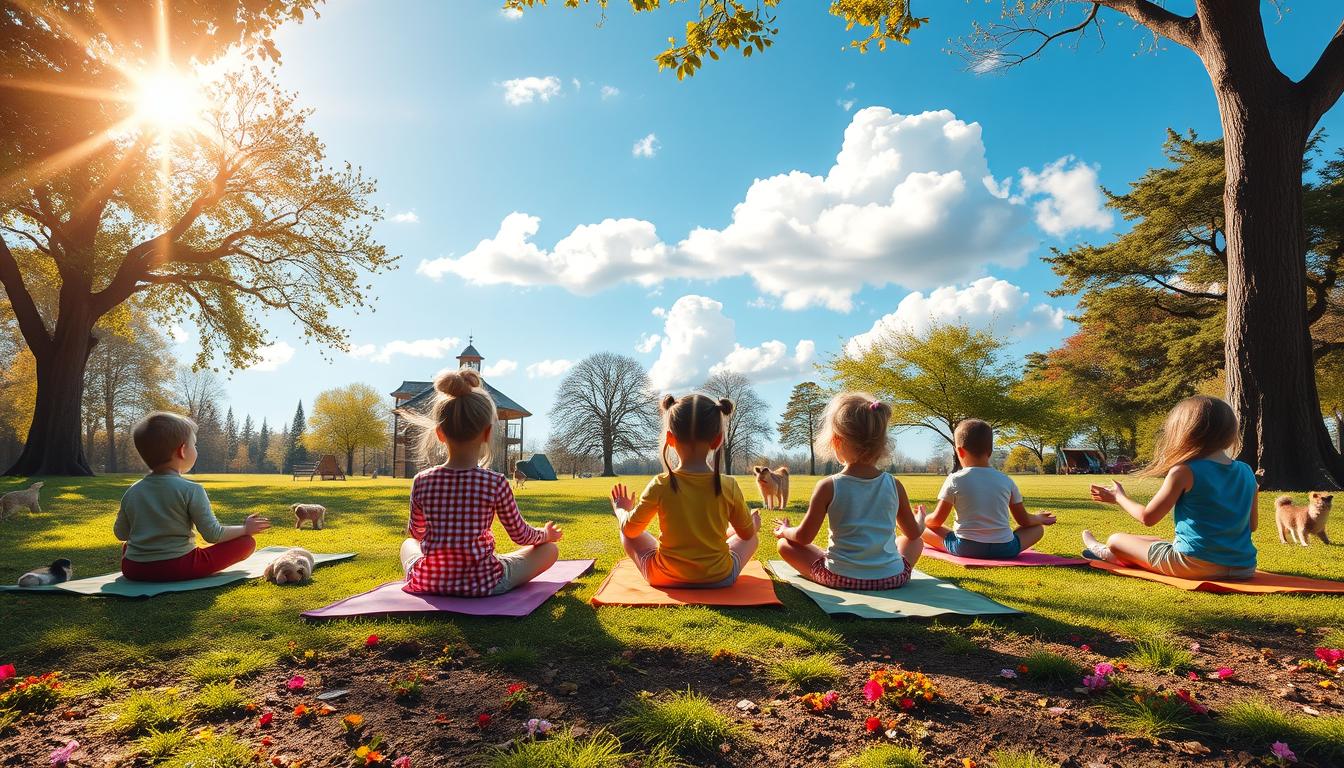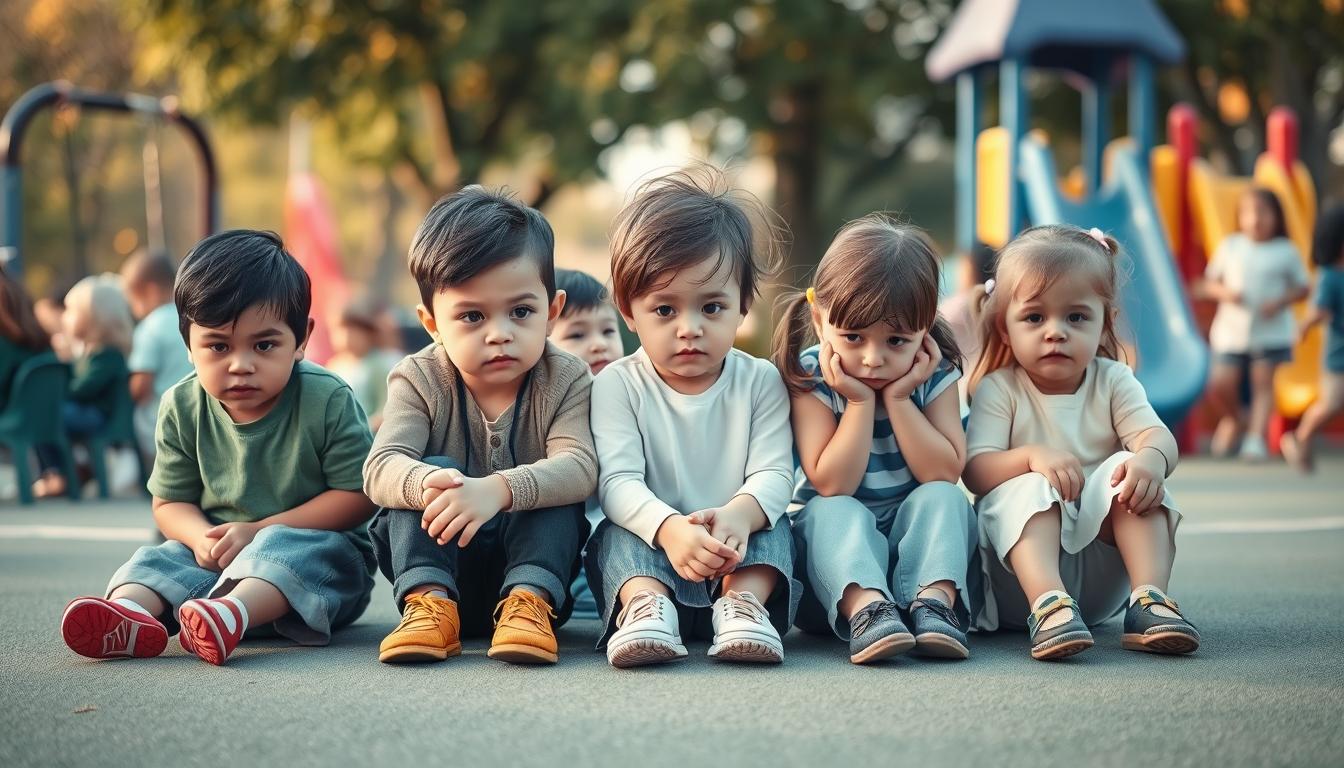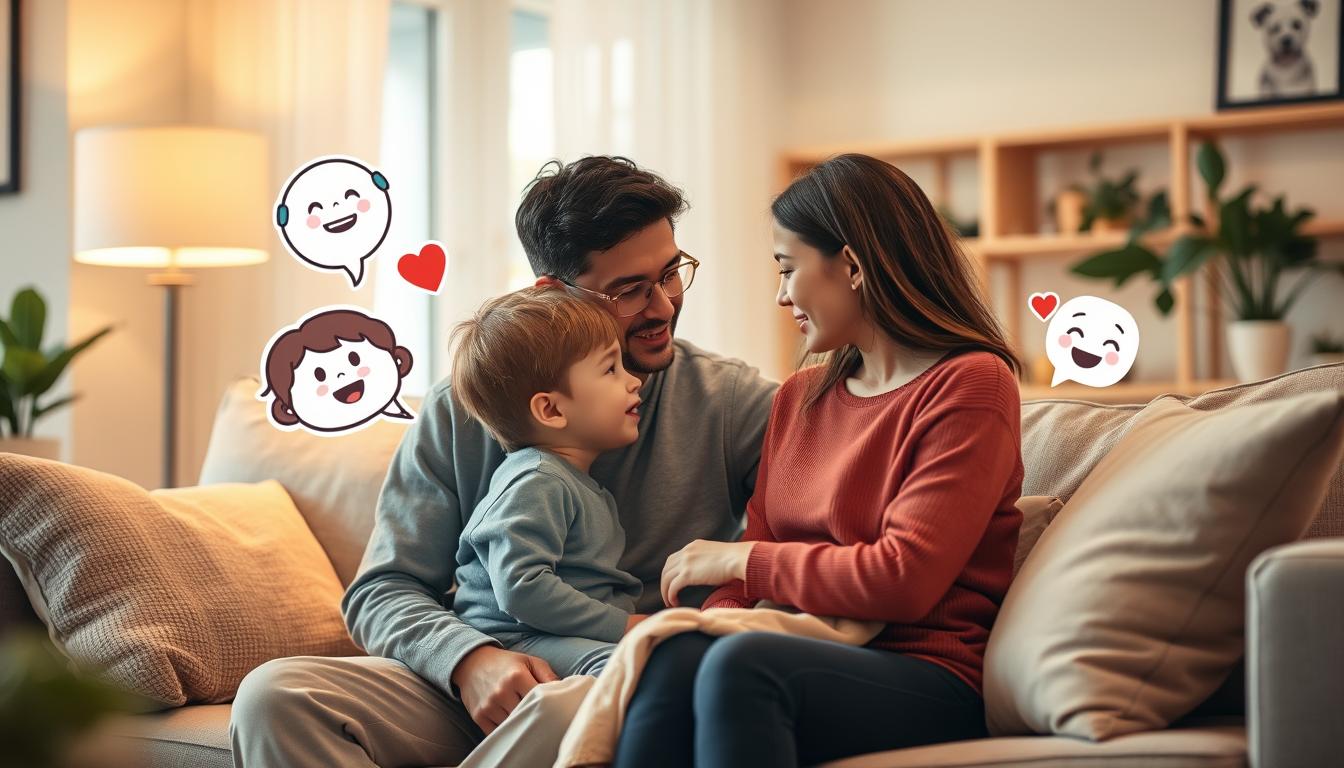“The greatest weapon against stress is our ability to choose one thought over another.” – William James, American psychologist and philosopher.
In today’s fast world, kids face a lot of stress. But, meditation and relaxation can help them feel better. This guide will show you fun ways to help your kids relax, think clearly, and feel peaceful.
Key Takeaways
- Discover the benefits of meditation and mindfulness for children’s physical, emotional, and academic development.
- Learn how to create a tranquil meditation space tailored to your child’s needs and preferences.
- Explore a variety of age-appropriate relaxation techniques, including breathing exercises, body scans, and gentle movement practices.
- Engage your child in fun mindfulness games and activities that promote self-awareness and stress management.
- Incorporate yoga into your child’s relaxation routine, focusing on kid-friendly poses and playful approaches.
Understanding the Benefits of Children’s Meditation and Mindfulness
Adding children’s yoga and guided meditation to your child’s day can bring many benefits. These practices help with physical health, emotional growth, and school success. They make kids feel better, think clearer, and do better in school.
Physical Benefits for Growing Bodies
Children who practice mindfulness sleep better, move more easily, and get stronger. Meditation and yoga teach deep breathing. This improves how well they breathe and their heart health.
Emotional and Mental Development
Mindfulness helps kids understand themselves better, handle feelings, and manage stress. It teaches them to stay in the moment. This reduces worry, boosts confidence, and helps them stay calm and focused.
Academic Performance Improvements
Research shows kids who do children’s yoga and guided meditation think better. They focus more, remember things better, and solve problems easier. This means they do well in school and learn more.
| Benefit | Description |
|---|---|
| Physical Health | Improved sleep, flexibility, muscle strength, and respiratory function |
| Emotional Regulation | Reduced anxiety, enhanced self-awareness, and increased self-esteem |
| Cognitive Function | Better concentration, memory, and problem-solving skills |
Adding children’s yoga and guided meditation to your child’s day can bring many benefits. It helps them stay healthy, feel good, and do well in school. Starting young with mindfulness sets them up for a happy, balanced life.
Getting Started: Creating the Perfect Meditation Space for Kids
Creating a cozy meditation space is key for introducing breathing exercises for kids and relaxation activities for children. Designing a space just for them can help them feel calm and learn mindfulness.
First, pick a quiet spot in your home. It could be a bedroom corner, a play area, or a living room nook. Ensure it’s well-lit, with natural light or soft lamps. Add comfy pillows, rugs, or beanbags to make it cozy.
- Bring in nature-inspired elements, such as plants, shells, or smooth stones, to enhance the serene ambiance.
- Display calming artwork or hang up inspiring quotes to spark their imagination.
- Experiment with aromatherapy by adding a few drops of lavender or chamomile essential oils to a diffuser.
After setting up the space, introduce simple breathing exercises for kids and relaxation activities for children. Start with basic mindful breathing. Then, add gentle movements like stretching or yoga to engage their bodies and minds.

Make the meditation space welcoming and easy to access. Let your kids add their favorite toys, artwork, or decorations. This dedicated space will help them start a lifelong mindfulness practice that’s good for their health and happiness.
Meditation and Relaxation Techniques for Children: Step-by-Step Guide
Helping kids with calming strategies and visualization can be very effective. It helps them deal with stress, focus better, and feel better overall. This guide will show you how to teach these practices to young minds.
Basic Breathing Exercises
Teaching kids basic breathing exercises is a great start. Have them sit or lie down comfortably. Tell them to close their eyes and focus on their breath. They should breathe slowly in through their nose and out through their mouth.
You can add a fun twist by having them imagine a balloon inflating and deflating with each breath.
Simple Body Scan Techniques
Body scan meditation is another good choice for kids. Guide them to pay attention to their body, starting from their toes and moving up to their head. Ask them to notice any feelings, tension, or relaxation in each part.
Tell them to breathe into any tight or uncomfortable spots.
Gentle Movement Practices
Adding gentle movement and mindful stretching can be fun for kids. Try simple yoga poses or tai chi-inspired movements. You can also have them imagine being a growing tree or a floating cloud.
Encourage them to move slowly and pay attention to their body’s feelings and their breath.
Make sure these practices are fun and easy for your child. Try different techniques to see what works best for them. With regular practice, these strategies can help kids manage their feelings, improve focus, and find peace within.
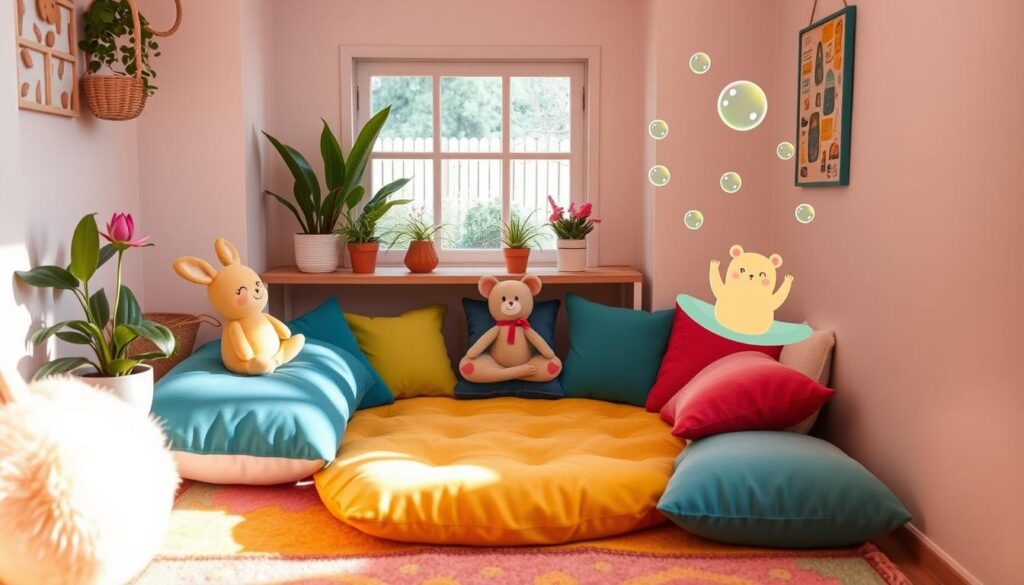
Fun Mindfulness Games and Activities for Different Age Groups
Teaching kids about mindfulness can be fun. There are many activities that help them learn self-awareness, focus, and calmness.
Sensory Explorations
Young kids can learn mindfulness through their senses. Try a mindful listening walk or a touch-and-feel game. These activities help them notice their surroundings.
Playful Movement
Older kids might like active mindfulness. Try mindful yoga or a “freezing game.” These exercises help them feel connected to their bodies and the moment.
Interactive Exercises
Group activities are great for kids. Try a “feelings check-in” or a “mindful storytelling” session. These activities help kids share and focus together.
| Age Group | Mindfulness Activities |
|---|---|
| Younger Children (3-6 years) |
|
| Elementary School (6-11 years) |
|
| Middle School (11-14 years) |
|
Offering different mindfulness for kids and relaxation activities for children helps them enjoy being present. It supports their well-being.
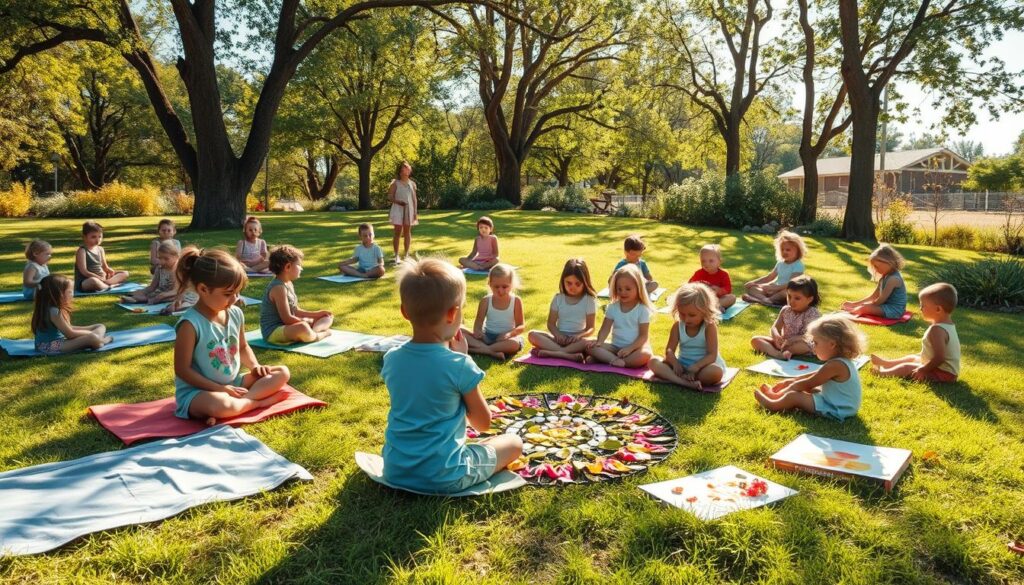
Incorporating Yoga into Children’s Relaxation Routines
Yoga is great for kids to relax, get flexible, and feel calm inside. Adding yoga to your child’s routine can bring many benefits. This section will show you how to make yoga fun and engaging for kids.
Kid-Friendly Yoga Poses
Start with yoga poses that kids love and are easy for them. Try Downward-Facing Dog, Tree Pose, and Butterfly Pose. These poses help with balance, strength, and knowing their body better. Begin with simple ones and make them harder as your child gets better.
Making Yoga Playful and Engaging
Make yoga fun for your child. Use stories, music, and props to make poses exciting. Let your child be creative with animal poses or dance moves.
Family Yoga Activities
Yoga is great for families to do together. Have a family yoga time each week. It’s a great way to bond and make yoga a part of your family’s life.

